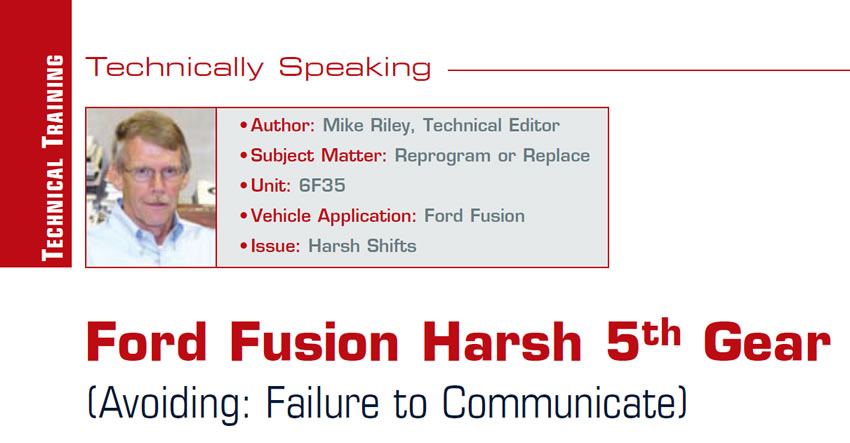
Technically Speaking
- Author: Mike Riley, Technical Editor
- Subject Matter: Reprogram or Replace
- Unit: 6F35
- Vehicle Application: Ford Fusion
- Issue: Harsh Shifts
Complaint / Concern:
A customer with a 2010 Ford Fusion was experiencing erratic harsh upshifts into 5th and sometimes 6th gear. The vehicle was equipped with a 3.0L engine, 6F35 transmission and had 58,000 miles on it. There were no trouble codes; however, the problem was getting progressively worse. The other gear ranges seemed okay and the fluid was in fairly good condition.
Cause / Condition:
There have been several TSBs issued concerning 6F35 shifting problems. Ford requires different PCM reprogramming procedures to deal with the various problems, as well as other component failure concerns. Rule number one: Always address the simple stuff first. Following are some TSB examples:
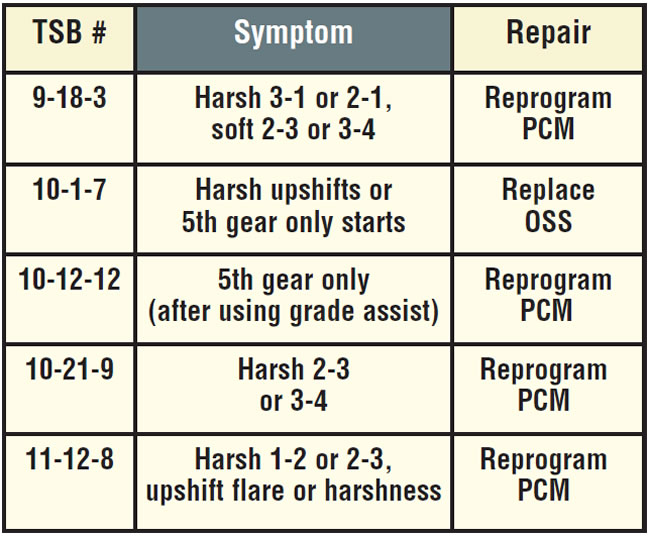
Based upon the symptoms that the Fusion exhibited, it was determined the most likely failure area was the valve body. The 6F35 has been having some premature valve-wear issues affecting various functions. Now the question is where to get one.
Normally, going to the OE dealer would mean buying an entire valve body for big money. Such is not the case with Ford on the 6F35. For some reason, Ford decided to make a chunk of valve body available, so that’s what was purchased.

Correction / Modification:
The valve body was delivered to the shop and given to a technician to install. The side cover was removed and the replacement valve-body half was installed without issue; however, when the vehicle was driven, it did the same exact thing to everyone’s disappointment. So, back to the drawing board!
After more searching, it was decided to pull the valve body back off and inspect it. Once the valve body was removed, the rebuilder started to check it out and discovered a bad solenoid regulator valve, which was the focus to start with. You might wonder, “How could that be with a brand-new valve body?” The answer was that the brand-new valve body that was installed wasn’t the valve body that was needed. The dealer mistakenly sent the wrong valve-body chunk and the technician merely installed what he was given. Ball dropped!
Unlike the GM 6T40, the Ford 6F35 is not a mechatronic valve body. The unit consists of a plastic solenoid lead frame and two main valve-body halves (Figure 1). Once the lead frame is removed, the solenoid retaining pins can fall out easily and the solenoids then can be removed.
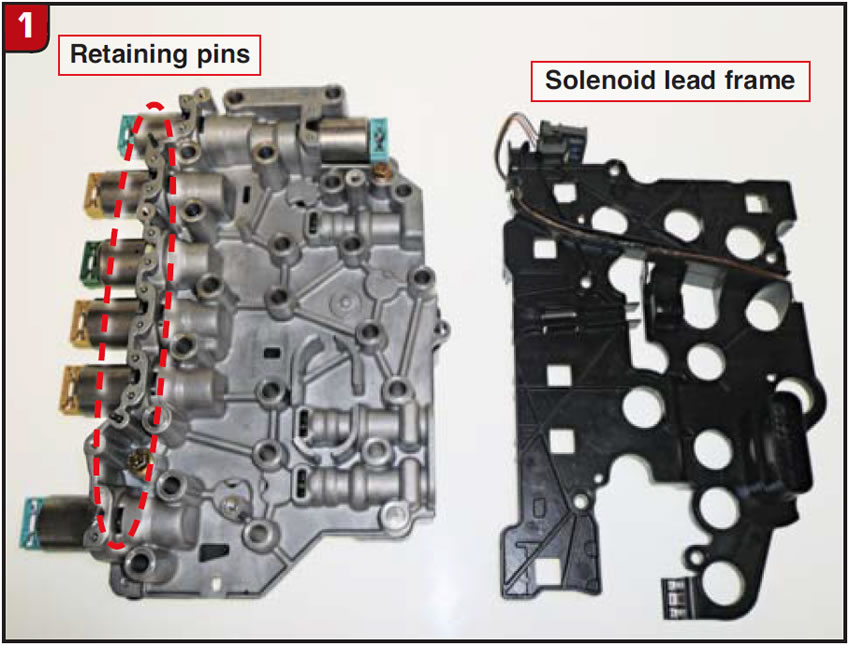
The outer half of the assembly is the solenoid body that contains all solenoids and a couple of valves (Figure 2). There have been part-number supersessions; however, the current part number is AL8Z-7G391C and it’s not cheap because of all the solenoids included (more than $800 list price). The only valves in the solenoid body are three clutch-latch valves.
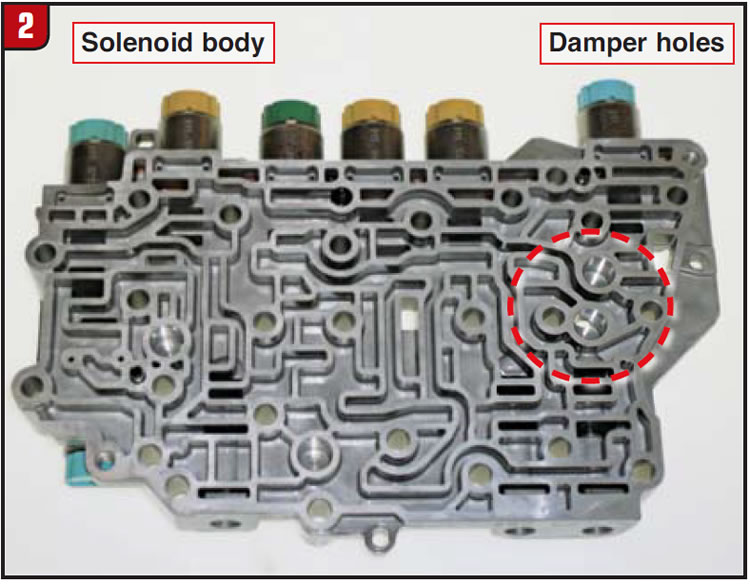

The valve-body half that was needed is called the main body and it contains the solenoid regulator valve, which is next to the manual valve (Figure 3). The solenoid regulator valve is a simple valve, but active. This valve (among others) wears prematurely and has prompted the aftermarket to develop replacement valves and sleeves.
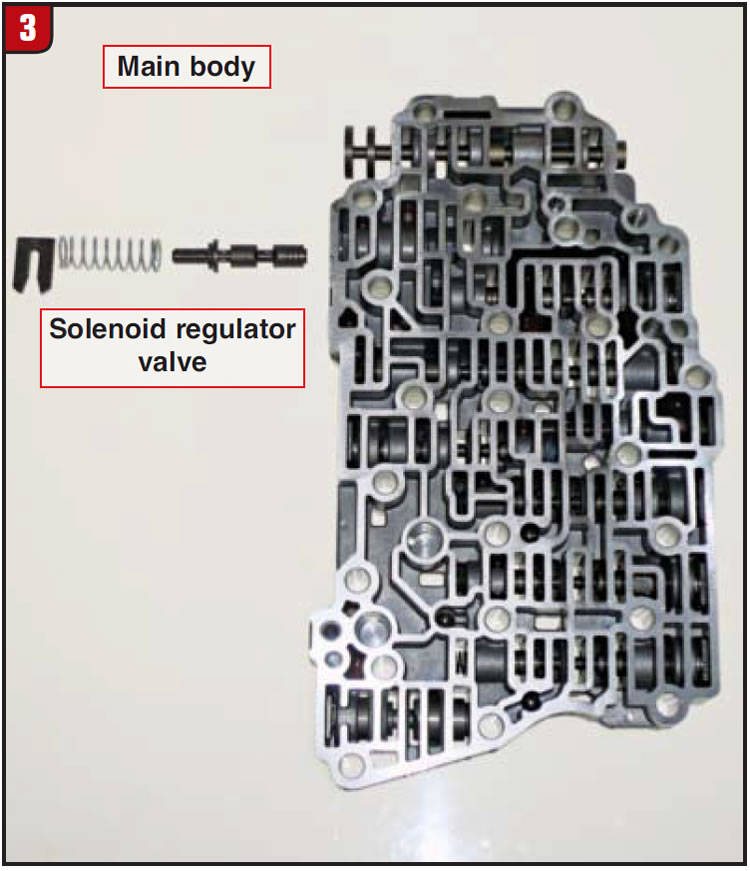
The solenoid regulator valve is fed with line pressure and distributes a regulated pressure to all of the solenoids (Figure 4). If the valve wears it can cause a variety of apply issues, based upon the extent of where and overall solenoid condition.
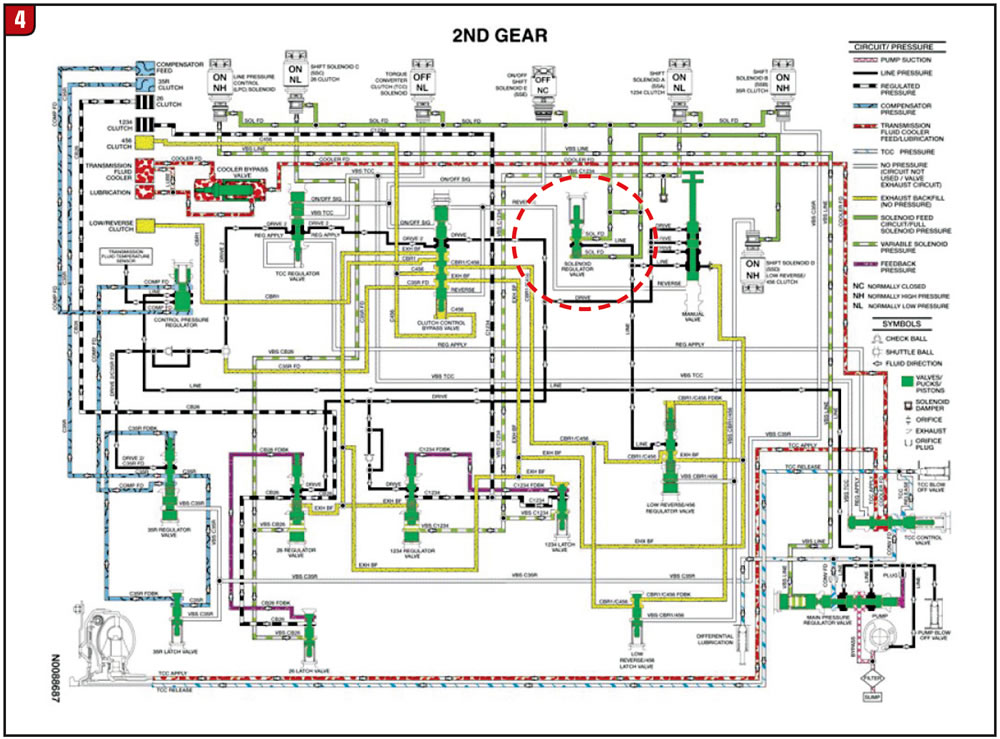
As with any other transmission, changes do occur to components, and the 6F35 valve body is no exception. The original main body had a casting number of 9L8P-7A101AA. Due to upgrades, the main body has been redesigned, affecting the worm tracks and other areas (Figure 5). In addition to the worm tracks, the manual valve now has an extra step on it affecting the position.
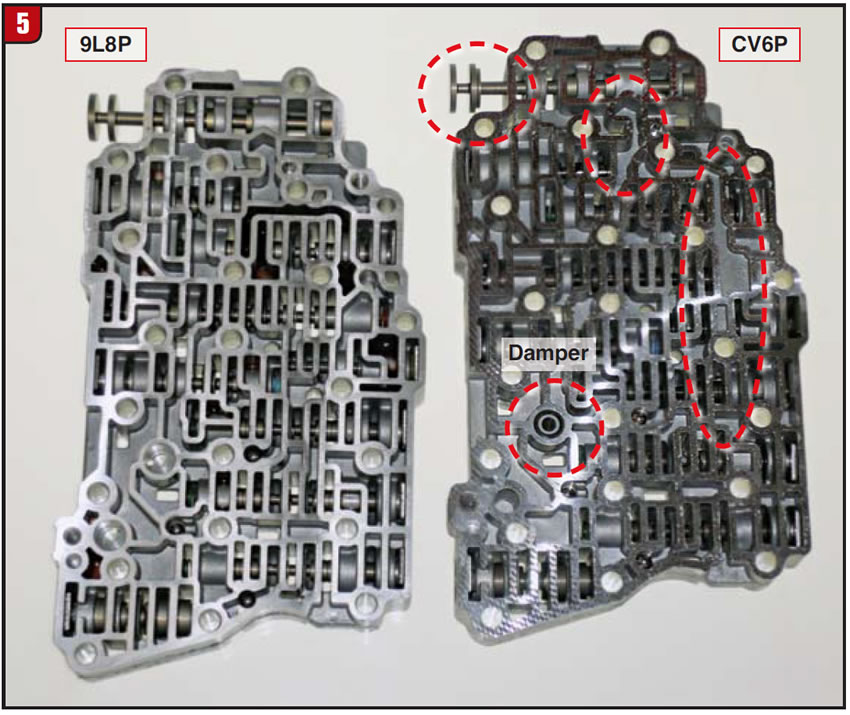

Depending on model there may or may not be a damper valve. The separator plate will have a corresponding hole if one is required. The new-design main body casting number is CV6P-7A101 with a service part number of CV6Z-7A100B. The upside is the OE replacement body costs less than $100.
Along with the new main body is a new body-to-body separator plate. The new plate must be used with the new body. First and second design plates should not be interchanged due to hole variations (Figure 6). Gaskets are bonded to the plate.
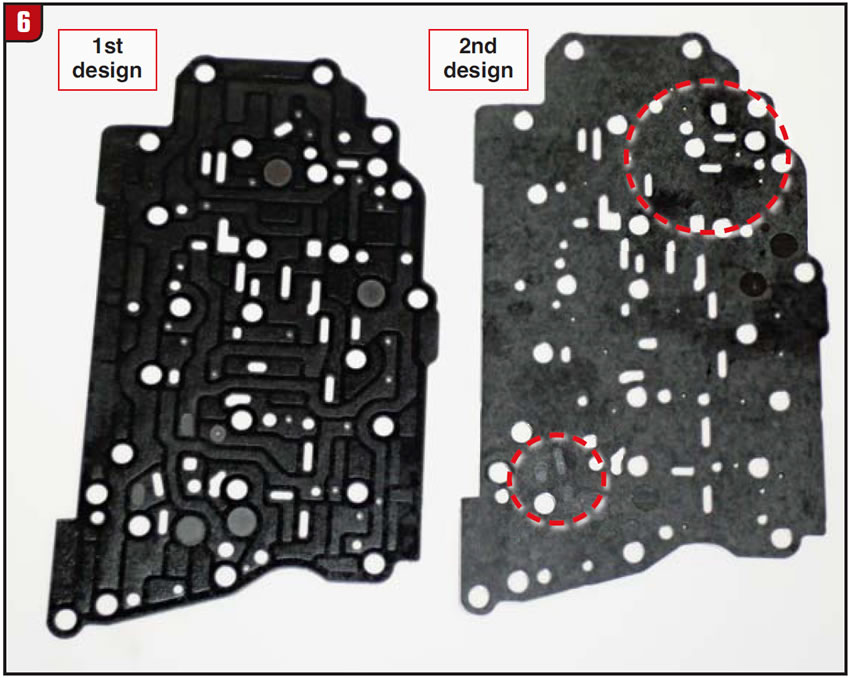
The bonded separator plate between the main body and case is part number DV6Z-7Z490A and is sold separately. It does not come with the replacement main body.
In the end, make sure all participating parties are in the loop and avoid “Failure to Communicate”.














